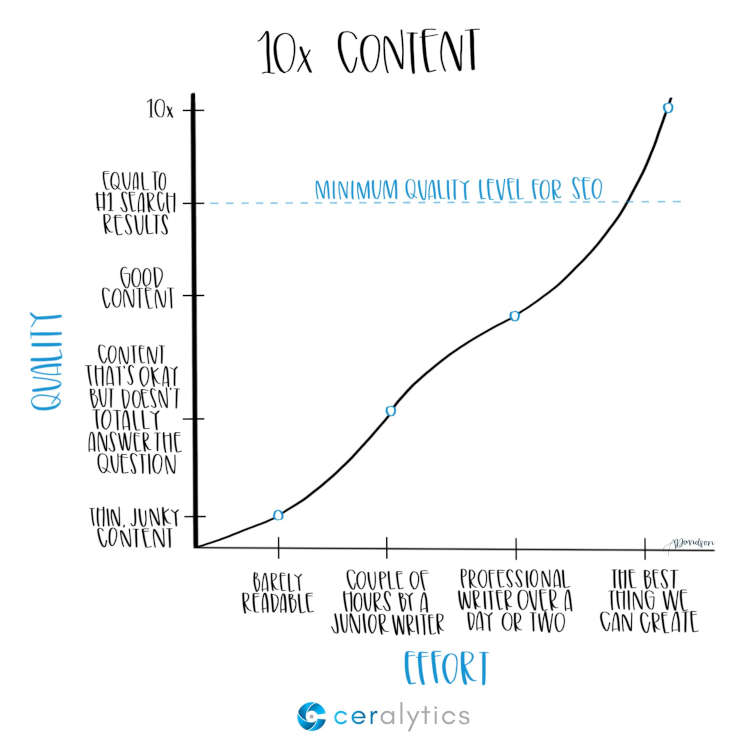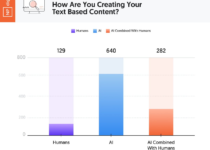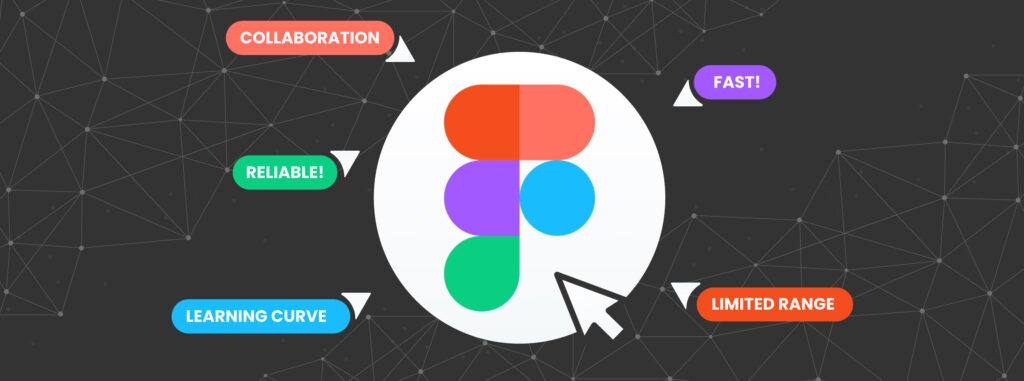Creating a Competitive Advantage: How to Build a Marketing Moat
Identifying and wielding your brand’s competitive advantage is crucial for success. Figuring out the one thing that makes your company stand out from the competition and attract customers is vital in achieving long-term growth.
In this blog post, we will discuss the concept of a “marketing moat” and how you can create one around your business to gain a competitive edge and maintain relevance in your vertical.
Understanding the Marketing Moat
To grasp the concept of a marketing moat, let’s take inspiration from Charlie Munger and Warren Buffett, who often talk about building moats around businesses:
What is a marketing moat? Well, picture a castle with a moat filled with water and a drawbridge that can be raised for defense.
Similarly, in business, a marketing moat is what makes your company more defensible and protected against competitors.
What you have to do is figure out what your moat is. What’s something about your brand that makes it impenetrable by competition? Is it your proprietary assets? Your reliable reputation? How about your staff?
Determining what makes your brand truly sing is the fulcrum of any strong marketing campaign. Once you’ve honed in on what makes you competent and favorable, all you have to do is present it to your audience.
Dive Deeper: SEO Strategies Based on Your Business’ Unique Competitive Advantages
The Role of Media in Creating a Marketing Moat
Naval Ravikant identifies four forms of leverage, each of which is viable for the success of any business:
- Code: Proprietary AI and automation that can be geared for a specific task and is highly efficient at accomplishing that task.
- Capital: Financial power and stability that can influence decisions and outcomes.
- Labor: A capable workforce of people who are effective and deliver results.
- Media: Public relations and the ability to influence an audience with brand messaging.
While all these forms are important, we’ll focus on media as a powerful tool to defend your business. In fact, media and marketing go hand in hand, shaping perceptions and building trust. A strong media presence can be your business’s strategic advantage.
Brand Building and Affinity
Building brand affinity starts with understanding your target audience. You have to glean insights from their behavior, needs, preferences and motivations to tailor your brand messaging to them.
When customers feel understood and valued, they are more likely to develop a strong connection and desire for your brand. Consider the brand Nike:
What sets Nike apart from competitors like Adidas or New Balance? It’s their brand, their unique selling proposition. While competitors may create comparable products, Nike’s brand affinity is what gives them competitive positioning.
People love buying from brands they know and trust, and you can achieve this by creating your own media company.
Dive Deeper: The Complete Guide to Brand Building (Must-Read for Digital Marketers)
Content Creation and Community Building
One strategy to build a marketing moat is by producing outstanding content:

By consistently delivering valuable content that resonates with your target audience, you can position yourself as an industry expert, gaining a market advantage. Building a community around your brand is equally important. Engage with your audience, respond to comments and offer help. By doing so, you establish a connection and build a loyal following.
Consumers are naturally drawn to brands that elicit positive emotions and align with their values.
Nike’s brand, for example, embodies the spirit of athleticism, performance and empowerment. People are not just purchasing a pair of shoes or a piece of clothing; they are buying into a lifestyle and an identity associated with the Nike brand. This emotional connection is what gives Nike a significant edge in the market.
The Power of Free
Another way to solidify your competitive advantage is by giving away valuable resources for free. Free tools or services that people are accustomed to paying for can foster a sense of affinity toward your brand. Offering something unique and useful helps establish your value proposition and separates you from the competition.
Here are a few examples of resources that a brand can give away to its customers for free:
- E-books or White Papers: These resources can provide valuable insights, tips, or industry trends that customers find useful. For example, a technology company can offer an e-book on the latest software development trends, while a fitness brand can provide a white paper on effective workout routines.
- Templates or Worksheets: Brands can develop templates or worksheets that help customers streamline their tasks or activities. These resources can range from business templates (e.g., budget templates, project management templates) to personal development worksheets (e.g., goal-setting worksheets, meal planners).
- Educational Videos or Webinars: Brands can create educational videos or host webinars that offer in-depth knowledge, tutorials, or demonstrations. For instance, a cosmetic brand can share video tutorials on different makeup techniques, or a financial institution can conduct webinars on investment strategies.
- Infographics or Cheat Sheets: Visually appealing infographics or cheat sheets that cover topics like industry statistics, quick reference guides, or step-by-step instructions are particularly helpful when customers need quick access to important information.
- Mobile Apps or Software: Brands can offer a free version with limited features or functionalities. This allows customers to experience and benefit from the brand’s product or service at no cost. For example, a photo editing software company can offer a free version of their app with basic editing tools, while a language learning platform can provide a limited-access version of their app for free.
- Online Courses or Training: These courses can be designed to provide valuable knowledge and skills related to the brand’s industry or products. For instance, a digital marketing agency can offer a free course on social media marketing, or a cooking equipment brand can provide a series of cooking tutorials.
- Consultations or Assessments: Providing free consultations or assessments to your customers as a way to showcase your expertise and offer personalized guidance is a valuable resource. This can be done through phone calls, video conferences, or online assessments. For example, a financial advisory firm can offer a complimentary financial consultation, or a fitness brand can provide a free body composition assessment.
When you provide free offerings to your target audience, you are essentially removing barriers and inviting them to experience your brand without any financial commitment. This gesture creates an instant sense of goodwill and reciprocity, as customers feel valued and appreciated.
The psychology behind giving something away for free lies in the principle of reciprocity—when someone receives something valuable without expecting anything in return, they often feel compelled to reciprocate in some way, whether through future purchases, brand loyalty, or word-of-mouth recommendations.
Dive Deeper: Should You Offer a Freemium Level for Your SaaS Platform?
The Impact of Branding and Storytelling
A brand tells a story and evokes emotions:
- Coca-Cola is more than just sugar water. It’s the memories of childhood happiness associated with the brand’s name, aesthetic and taste.
- Apple is synonymous with high-quality products that are reliable and inspire loyalty.
These brands have successfully built their reputation over time by delivering excellent products and telling compelling stories.
At its core, brand storytelling is about crafting narratives that resonate with the target audience. It goes beyond the features and benefits of a product or service, delving into the realm of emotions, values and aspirations. When you marry what your brand excels at with a compelling story, you will encapsulate the fundamental human need for connection, empathy, and understanding.
One of the key impacts of brand storytelling is the ability to create a strong emotional bond with customers. By sharing authentic and relatable stories, brands can evoke emotions that resonate with their audience’s own experiences, aspirations, and desires.
This emotional connection fosters loyalty, trust, and a sense of belonging, turning customers into brand advocates who are eager to share their positive experiences with others.
Keep these 5 principles of good storytelling in mind:
- Choose a Relatable Main Character
- Put the Best Elements in the Beginning of Your Story
- Create “Conflict”
- Understand the Relationship Between Listening and Telling
- Keep Your Story Authentic
Dive Deeper: 9 Examples of Storytelling Marketing to Inspire Your Next Campaign
Differentiation Through Creativity
Liquid Death, a company selling aluminum can water, is a prime example of how creativity can be a powerful moat. Although it’s just water, they differentiate themselves through industry advantage. With funny commercials and unique flavors, they create a memorable brand experience.
By adopting a creative mindset and thinking outside the box, you can find ways to stand out and establish your key differentiator.
Another impactful aspect of brand storytelling is its ability to build trust and credibility. In a world where consumers are becoming increasingly skeptical of traditional advertising, authentic storytelling offers a refreshing alternative. Customers are more likely to engage with brands they perceive as honest and reliable, resulting in long-term relationships and repeat business.
Furthermore, brand storytelling is a valuable tool for building a sense of community. By sharing stories that resonate with a specific target audience, businesses can create a sense of belonging and foster a community of like-minded individuals. This community-driven approach encourages engagement, collaboration, and user-generated content, strengthening brand loyalty and advocacy.
Consistency and Long-Term Vision
To create a robust marketing moat, you need to remain consistent and foster a long-term vision:
- Consistency: Consistency is the art of delivering a cohesive and unified experience across all touch points. It encompasses everything from brand messaging and visual identity to product quality and customer service. When a brand maintains consistency in its actions, it builds trust and reliability among its audience.
- Long-term Vision: Long-term vision complements consistency by providing a roadmap for growth and evolution. It involves setting clear goals, defining a brand’s purpose, and envisioning its future trajectory. A long-term vision allows a brand to anticipate market trends, adapt to changing consumer needs, and stay ahead of the competition. It provides a sense of direction and purpose, motivating teams and stakeholders to work towards a common goal.
Continuously produce high-quality content, engage with your community, and find ways to surprise and delight your audience. Embrace innovation and reinvest in your business. The compound effect of these efforts over time will solidify your sustainable competitive advantage.
Building Your Competitive Advantage into Your Marketing Moat
It’s essential to build a marketing moat to gain a competitive advantage in our modern climate. Focusing on media, brand building, content creation, community engagement and creative differentiation can establish a powerful presence that separates you from your competitors.
Remember to use all the tools at your disposal, be it a strong and informed workforce, a cutting-edge proprietary asset, abundant capital, or your brand’s “why.”
When you wield your strengths, you’ll become a powerhouse in your industry that your competition will find difficult to contend with. A lot of ideas can be mimicked, and a lot of people are willing to copy other ideas (including yours!), but the key to protecting your ideas is being the best at executing them.
If you’re ready to get that competitive advantage, Single Grain’s marketing & growth experts can help!👇
Repurposed from our Marketing School podcast.
The post Creating a Competitive Advantage: How to Build a Marketing Moat appeared first on Single Grain.


